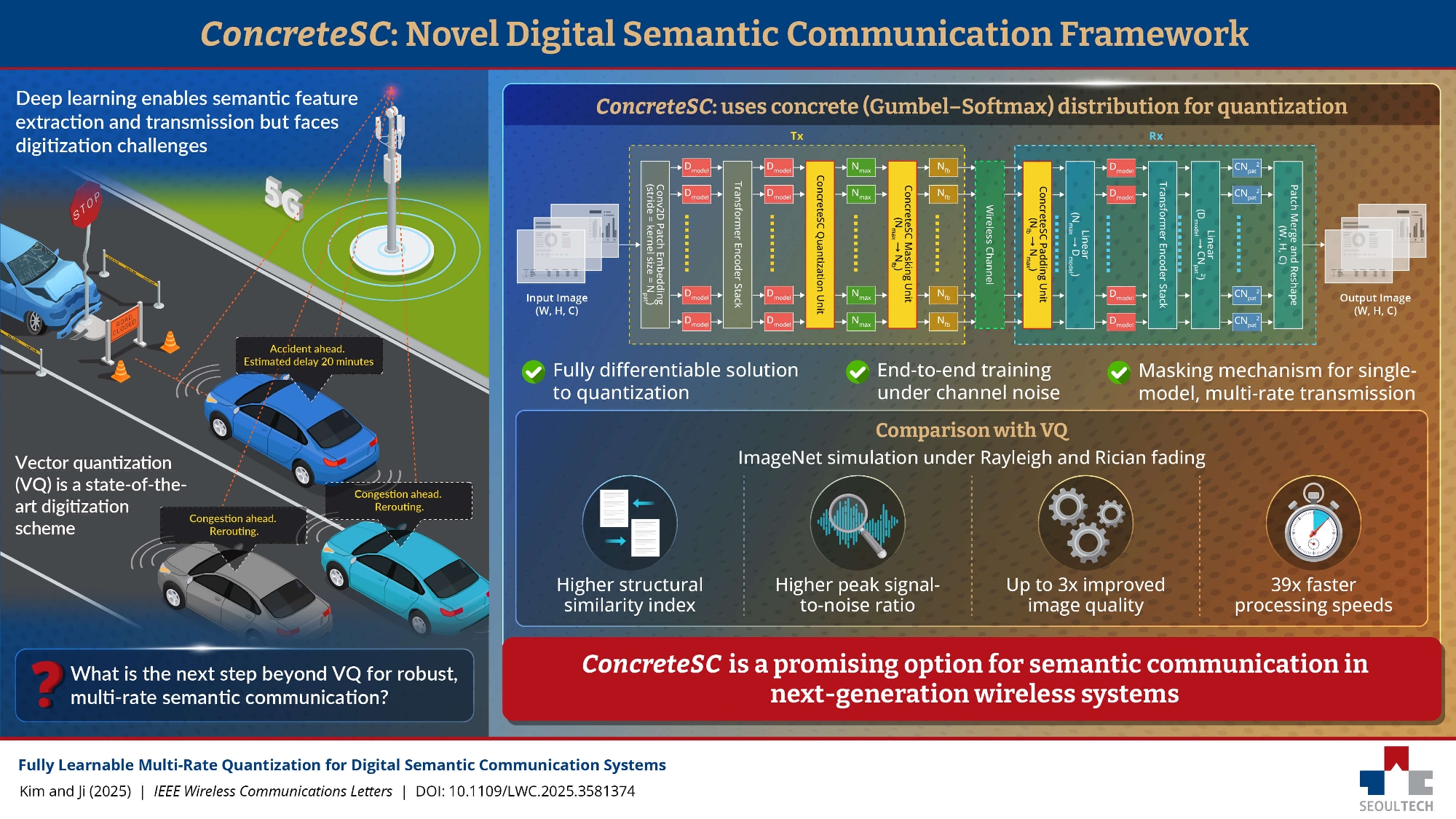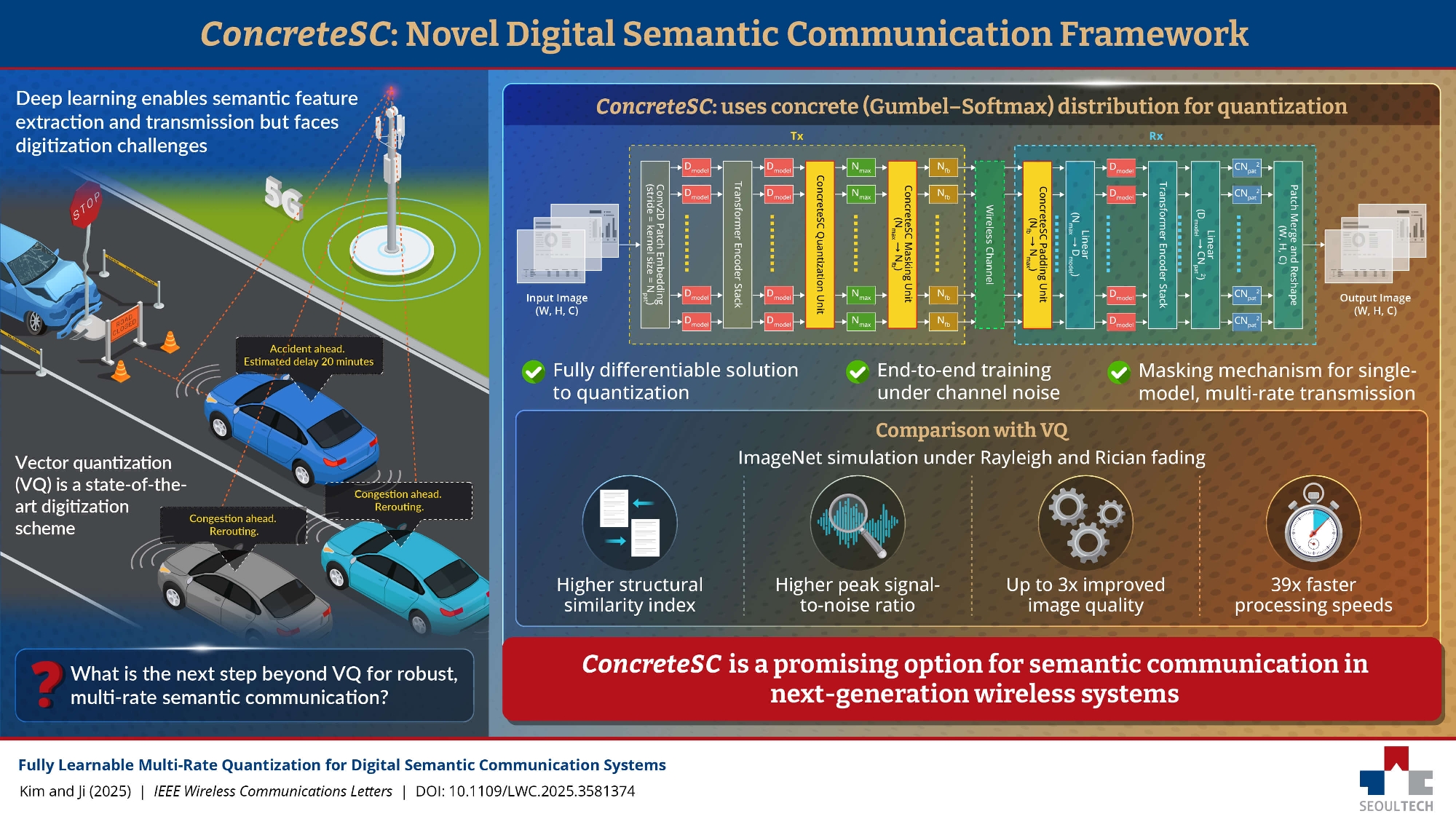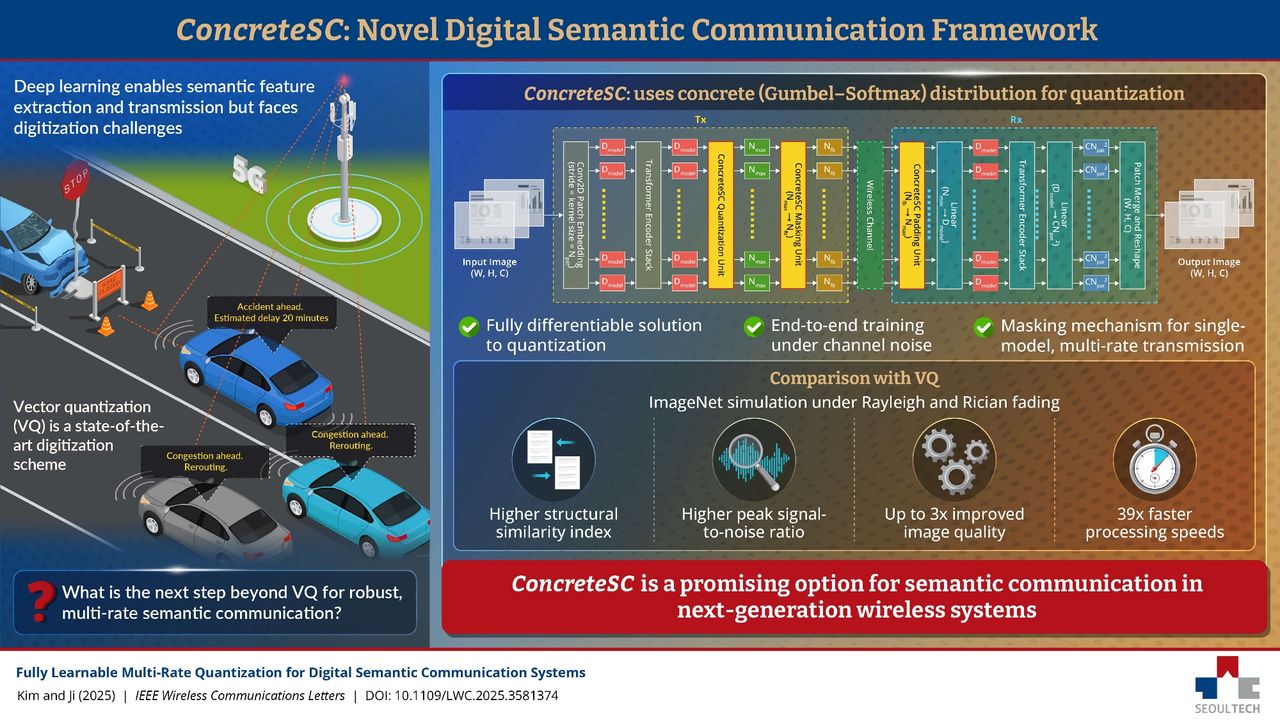Key Points
- ConcreteSC eliminates the need for large codebooks in semantic communication.
- The method focuses on transmitting meaning rather than raw data.
- It offers fully differentiable quantization that can be trained under noisy conditions.
- Simulations show improved image quality and lower computational complexity versus traditional vector quantization.
- Potential uses include 6G networks, smart factories, and AI‑enabled devices for healthcare monitoring.
- Developed by a South Korean research team led by Dr. Dong Jin Ji.


Breakthrough in Sixth-generation Communication
A New Method for Semantic Communication
Researchers in South Korea have developed ConcreteSC, a fresh approach to semantic communication that aims to make future wireless systems faster and more efficient. Semantic communication shifts the focus from transmitting raw data to sending the underlying meaning of information, such as prioritizing what an image represents rather than each individual pixel. This concept reduces bandwidth usage and accelerates transmission, which is especially valuable for artificial intelligence and connected devices.
Traditional systems rely on vector quantization, a technique that uses extensive codebooks to store possible signal patterns. These large codebooks are cumbersome to manage and are vulnerable to channel noise and training divergence. ConcreteSC replaces this paradigm with a mathematical framework based on a special probability distribution, enabling the direct generation of required bitstreams without the overhead of massive codebooks.
Technical Advantages and Performance
The ConcreteSC framework is fully differentiable, allowing end‑to‑end training even when channel noise is present. By generating bitstreams directly, the method reduces complexity, as its computational operations increase only with bit length rather than expanding exponentially with codebook size. In simulated evaluations, ConcreteSC demonstrated superior performance compared to vector‑quantization methods, achieving higher structural similarity and better peak signal‑to‑noise ratio for transmitted images while also lowering computational demands.
Potential Applications and Impact
The research team believes ConcreteSC could play a significant role in next‑generation wireless networks, such as 6G, where ultra‑dense machine communications are expected. Its ability to efficiently handle semantic data makes it suitable for smart factories that require rapid and reliable communication among numerous devices. Additionally, the method holds promise for healthcare and lifestyle monitoring systems that rely on small, AI‑enabled devices, offering more robust and low‑latency data transmission.
Overall, the introduction of ConcreteSC represents a meaningful step toward more intelligent and resource‑efficient wireless communication. By eliminating the need for bulky codebooks and enhancing resilience to noise, the technology aligns with the growing demand for fast, reliable, and semantically aware connectivity across a range of emerging applications.
Source: techradar.com
